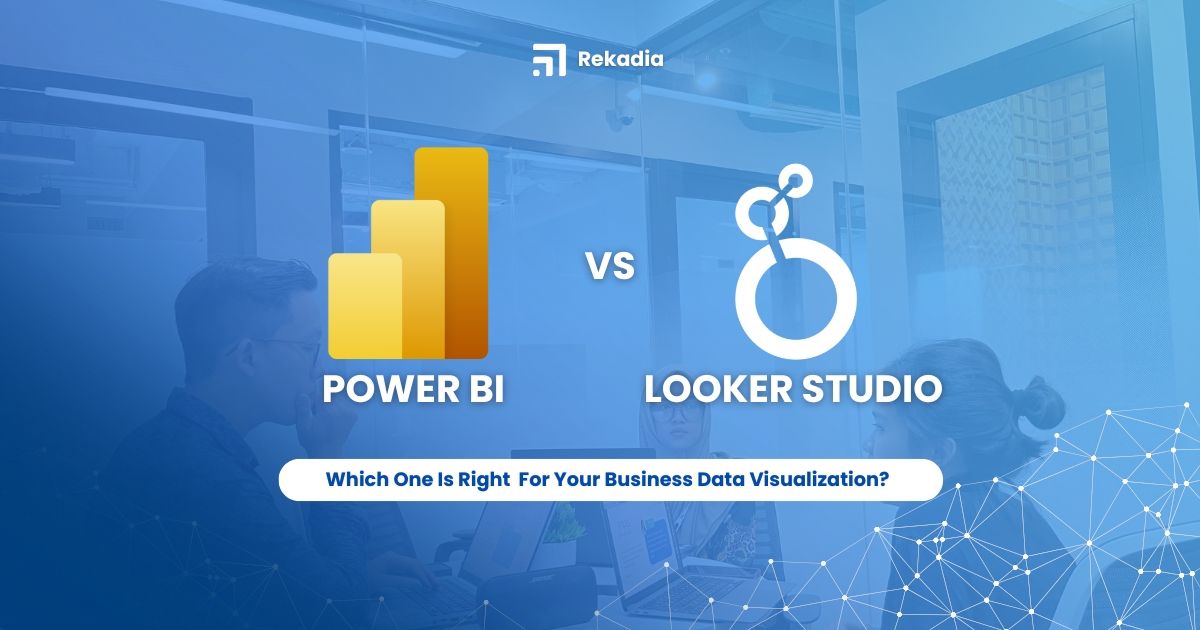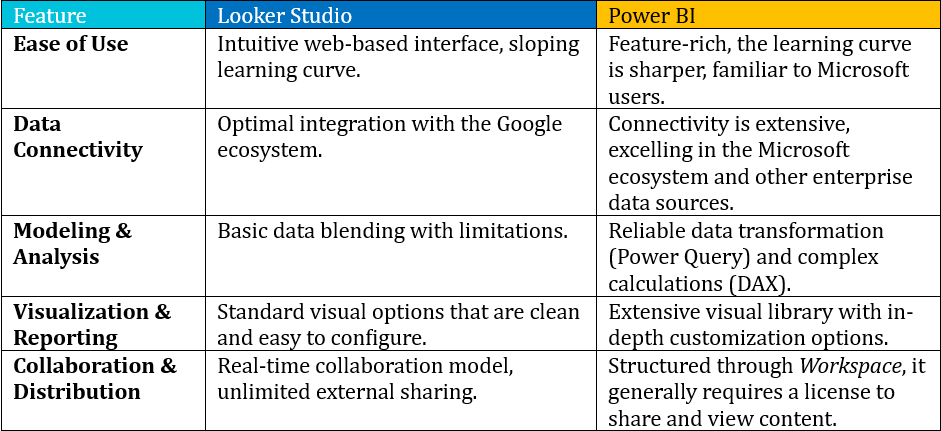
In today's digital era, data has become a fundamental strategic asset for business success. The ability to interpret raw data into actionable insights is a key differentiator between market leaders and their competitors. In this context, business intelligence (BI) platforms and data visualization play a crucial role.
The two platforms that dominate the market are Microsoft Power BI and Google Looker Studio. Both are reliable devices, but they are designed with different philosophies and for different needs. As an expert consultant in the field of business intelligence, Rekadia compiled this guide to provide an objective and comprehensive comparison, allowing decision-makers to choose the platform that best suits your business strategy, scale, and technology ecosystem.

Looker Studio is known for its minimalist and intuitive interface. With a web-based drag-and-drop approach , users can generate functional reports in no time without the need for extensive training.
Power BI presents a more comprehensive architecture, consisting of Power BI Desktop for development, and Power BI Service for distribution. While the depth of features offers more capabilities, it also presents a sharper learning curve for new users.
Looker Studio excels at native integration with Google's suite of products. However, to connect to data sources outside of these ecosystems (for example, SQL databases or other social media platforms), third-party connectors are often required which can potentially incur additional costs.
Power BI offers a much wider spectrum of connectivity by default. Its integration with Azure services, Dynamics 365, and especially Microsoft Excel makes it a logical choice for organizations operating within the Microsoft ecosystem.
This is where the most significant differences between the two platforms are seen.
Looker Studio is suitable for descriptive analysis. Its main feature is data blending which allows the merging of multiple data sources, but with clear technical limitations.
Power BI is designed for much more in-depth analysis.
While mastering the DAX requires effort, its ability to translate complex business logic into measurable metrics is a significant competitive advantage. This process can be accelerated with guidance from an experienced implementation partner.
Looker Studio offers standard Google user-based access controls. This is adequate for use cases with less sensitive data.
Power BI provides a set of enterprise-level security and governance features. Its flagship feature is Row-Level Security (RLS), which allows administrators to set data access rights down to the individual row-level. For example, with the same report, each regional manager can only see data that is relevant to their region. This feature is crucial for maintaining the confidentiality and integrity of data in complex organizations.
Looker Studio operates on a freemium model. Although the main application is free, the total cost of ownership can still increase as the need for paid third-party connectors and the potential cost of data warehouse infrastructure (such as Google BigQuery) to handle large volumes of data.
Power BI uses a tiered licensing model (Free, Pro, Premium per User, and Capacity). While it requires an initial investment for Pro licenses in team scenarios, this model offers better cost predictability at scale and is often more economical when organizations need connections to multiple data sources.
The choice between Power BI and Looker Studio should be based on a strategic evaluation of your organization's unique needs.
Select Power BI if:
Choose Looker Studio if:
Often, a hybrid approach is the optimal solution, where Looker Studio is used for dynamic marketing reporting, while Power BI functions as a centralized BI platform for financial, operational, and managerial analysis.
Choosing Power BI is the right strategic decision to drive a data-driven culture. However, the implementation process from data integration to the development of complex analytical models requires specific expertise to maximize your return on investment (ROI). At Rekadia, we have more than 15 years of experience in implementing business intelligence solutions using Power BI. Our team not only helps you build your dashboard, but also designs a robust and reliable data architecture, and ensures your BI platform can grow as the business evolves. If you're confident Power BI is the right platform and need expert guidance to get started, we've got you covered. Consult with us